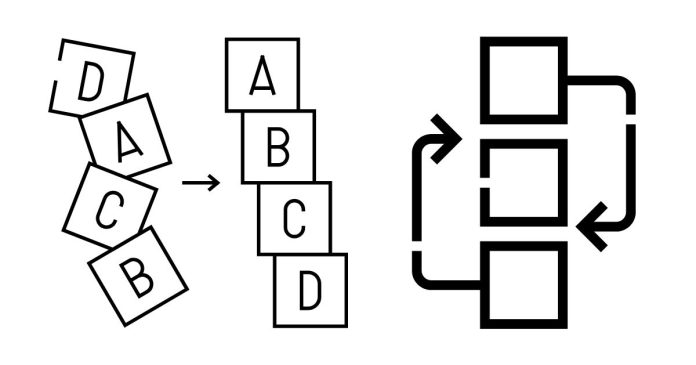Sorting algorithms are methods used to arrange data in a specific order, typically ascending or descending. They are fundamental in computer science and are used in various applications, such as searching, organizing, and optimizing data.
Types of Sorting Algorithms
- Comparison-Based Sorting Algorithms These algorithms compare elements to determine their order.
- Bubble Sort
- Selection Sort
- Insertion Sort
- Merge Sort
- Quick Sort
- Heap Sort
- Non-Comparison-Based Sorting Algorithms These algorithms use methods other than comparisons, often with constraints on the data.
- Counting Sort
- Radix Sort
- Bucket Sort
Popular Sorting Algorithms
1. Bubble Sort
- Description: Repeatedly swaps adjacent elements if they are in the wrong order.
- Time Complexity:
- Best Case: O(n)O(n)
- Worst Case: O(n2)O(n^2)
- Usage: Simple but inefficient for large datasets.
2. Selection Sort
- Description: Finds the smallest element and places it at the beginning, then repeats for the remaining elements.
- Time Complexity:
- Best Case: O(n2)O(n^2)
- Worst Case: O(n2)O(n^2)
- Usage: Easy to implement but inefficient.
3. Insertion Sort
- Description: Builds a sorted list by repeatedly taking an element and inserting it into its correct position.
- Time Complexity:
- Best Case: O(n)O(n)
- Worst Case: O(n2)O(n^2)
- Usage: Efficient for small or partially sorted datasets.
4. Merge Sort
- Description: Divides the array into halves, sorts each half, and merges them.
- Time Complexity:
- Best Case: O(nlogn)O(n \log n)
- Worst Case: O(nlogn)O(n \log n)
- Usage: Stable and efficient for large datasets.
5. Quick Sort
- Description: Uses a pivot element to partition the array into two subarrays and recursively sorts them.
- Time Complexity:
- Best Case: O(nlogn)O(n \log n)
- Worst Case: O(n2)O(n^2) (rare with proper pivot selection)
- Usage: Preferred for large datasets due to its average-case efficiency.



